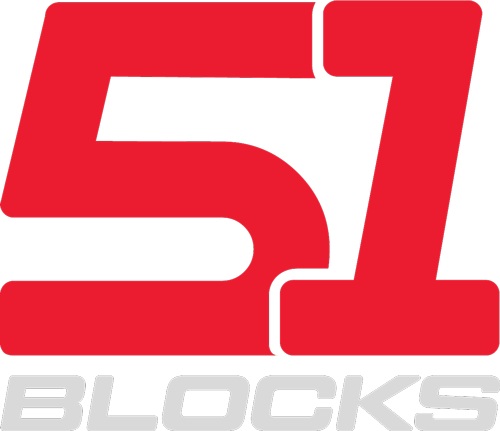Hey there!
Ever wanted to navigate the digital marketing world like a pro? Look no further!
‘A Comprehensive Guide to Pricing and Profit Margins for Digital Marketing Agencies’ is your go-to resource for mastering the art of pricing and maximizing profits.
From understanding pricing factors to optimizing profit margins, this guide covers it all.
Whether you’re a seasoned agency or just starting out, you’ll find valuable insights and strategies to help you thrive in the competitive digital marketing landscape.
So, buckle up and get ready to take your agency to new heights!
Key Takeaways
- Customer segmentation allows for tailored pricing strategies.
- Value-based pricing should be implemented based on the perceived value of the services.
- Conducting a thorough cost analysis and managing overhead is crucial for profitability and sustainability.
- Different pricing models and fee structures, such as hourly rates or project-based pricing, can be considered to optimize profit margins.
Understanding Pricing Factors
When pricing digital marketing services, you need to take into account both the costs of production and the value to the client. Understanding your customer segmentation is crucial as it allows you to tailor your pricing strategy to different customer groups based on their specific needs and willingness to pay. Customer segmentation enables you to offer different pricing packages or services that are attractive to each segment, maximizing your overall revenue potential.
Pricing psychology also plays a significant role in determining how you price your digital marketing services. By understanding the psychological factors that influence purchasing decisions, such as perceived value, anchoring, and the framing effect, you can strategically price your services to appeal to your target audience. For example, offering tiered pricing options can create a sense of value and choice for your clients, leading to increased satisfaction and loyalty.
As you delve into understanding pricing factors, it’s essential to consider how your competitors are positioning themselves in the market. Conducting a competitive analysis will provide valuable insights into how other digital marketing agencies are pricing their services, what value they’re offering, and how you can differentiate yourself. By understanding the competitive landscape, you can position your agency effectively, highlighting your unique selling points and justifying your pricing strategy to potential clients.
Transitioning into the subsequent section about competitive analysis and positioning, it’s clear that understanding the market and customer needs is essential for developing a successful pricing strategy.
Competitive Analysis and Positioning
Now that we’ve covered pricing factors, it’s time to focus on competitive analysis and positioning.
Understanding where you stand in the market and how your competitors price their services is crucial for setting your agency apart. By analyzing your competition’s pricing strategies, you can position your agency in a way that highlights your unique value and ensures your pricing is competitive.
Understanding Market Positioning
To achieve effective market positioning, conduct a thorough competitive analysis to understand your agency’s place within the digital marketing landscape. Identify your unique market differentiation and brand positioning by analyzing your competitors’ strategies, strengths, and weaknesses. Look at their pricing, target audience, and the value they offer.
This will help you understand where your agency stands in relation to others and what sets you apart. By knowing your competitors’ positioning, you can better define your own and communicate it to potential clients.
It’s important to be aware of the market trends and changes in consumer behavior to adapt your positioning accordingly. This analysis will give you the insights needed to strategically position your agency in the market, allowing you to stand out and attract the right clients.
Analyzing Competitor Pricing
You frequently analyze competitor pricing to understand how your agency’s rates compare within the digital marketing landscape, helping you strategically position your services for maximum impact.
By keeping an eye on pricing trends and conducting thorough market comparisons, you gain a clearer understanding of where your agency stands in relation to competitors. This allows you to make informed decisions about pricing strategies and service offerings, ensuring that your agency remains competitive and attractive to potential clients.
When analyzing competitor pricing, you can identify areas where you have a competitive advantage and areas where adjustments may be necessary. This knowledge empowers you to highlight your unique value proposition and differentiate your agency in the market, ultimately driving your business towards greater success.
Value-Based Pricing Strategies
When setting prices for your digital marketing services, it’s important to consider the value they bring to your clients.
By basing your pricing on the return on investment your services provide to the customer, you can ensure that your pricing aligns with the value they receive.
Understanding the perceived value of your offerings will help you determine the most appropriate prices for your agency’s services.
Customer ROI as Basis
Maximizing customer ROI forms the foundation for implementing value-based pricing strategies in your digital marketing agency. By focusing on customer ROI, you can ensure that your pricing reflects the value you deliver.
Consider these key elements to help you incorporate customer ROI into your pricing strategy:
- Customer retention: Prioritize long-term value over short-term gains.
- Pricing psychology: Understand how customers perceive value and use it to your advantage.
- Data-driven decision making: Leverage analytics to quantify the impact of your services on the customer’s bottom line.
- Customized pricing models: Tailor your pricing to align with the specific ROI goals of each client.
- Transparent communication: Clearly articulate the ROI potential of your services to build trust and demonstrate value.
Perceived Value Determines
To determine value-based pricing strategies, assess the perceived value of your digital marketing services.
Perceived value is the customer’s opinion of the benefits they receive from your services compared to the cost. It’s essential to understand how your services are perceived and valued by your clients.
Customer satisfaction plays a key role in shaping perceived value. When clients are satisfied with the results and overall experience of your digital marketing services, they’re likely to perceive them as valuable.
By consistently delivering high-quality results and maintaining excellent communication and support, you can enhance the perceived value of your services.
This, in turn, allows you to implement value-based pricing strategies that align with the true worth of your offerings, creating a win-win situation for both you and your clients.
Aligning Price With Value
You can align your prices with the perceived value of your digital marketing services by implementing value-based pricing strategies. This approach allows you to set prices based on the value proposition of your services, rather than simply on costs or competitor pricing.
Here are five key strategies to help you implement value-based pricing effectively:
- Understand the unique value proposition of your digital marketing services.
- Consider the pricing psychology of your target market and how they perceive value.
- Communicate the specific benefits and outcomes that clients can expect from your services.
- Offer tiered pricing options that align with different levels of value and service.
- Continuously evaluate and adjust your pricing based on the evolving value you provide to clients.
Cost Structure and Overhead Management
Managing your agency’s cost structure and overhead is crucial for maintaining profitability and sustainability in the digital marketing industry. Conducting a thorough cost analysis can provide valuable insights into where your money is going and where you can potentially cut expenses. Start by examining your fixed costs, such as rent, utilities, and salaries, to identify areas where you may be able to reduce spending without sacrificing quality.
Another key aspect of cost structure and overhead management is keeping a close eye on variable expenses. These can include client acquisition costs, software subscriptions, and marketing expenses. Look for opportunities to streamline processes, renegotiate contracts, or explore more cost-effective alternatives. By doing so, you can free up resources to invest in areas that will drive growth and enhance the value you provide to your clients.
Implementing efficient systems and workflows can also contribute to expense reduction. By optimizing your internal operations, you can minimize waste and improve productivity, ultimately leading to lower overhead costs. Additionally, fostering a culture of cost-consciousness among your team can encourage everyone to contribute to the agency’s financial health.
Pricing Models and Fee Structures
After establishing a solid understanding of your agency’s cost structure and overhead, it’s essential to delve into the various pricing models and fee structures available in the digital marketing industry. When considering how to price your services, it’s important to take into account fee flexibility and service bundling. Here are some key factors to consider:
- Hourly Rates: Charging clients based on the number of hours worked on a project.
- Project-Based Pricing: Quoting a fixed price for an entire project, regardless of the time spent.
- Value-Based Pricing: Aligning the price with the value delivered to the client, rather than the hours worked.
- Retainer Fees: Establishing a monthly fee for ongoing services, ensuring a steady income stream.
- Performance-Based Pricing: Tying the agency’s compensation to the performance or results achieved.
These models offer different approaches to pricing your services, and each has its own advantages and drawbacks. Additionally, offering fee flexibility and service bundling can provide clients with options that suit their specific needs and budget constraints.
By adopting a combination of these models and structures, you can cater to a wider range of clients while maximizing your agency’s profitability.
As you gain a better understanding of the pricing models and fee structures, you can then explore client retention and upselling techniques in the subsequent section.
Client Retention and Upselling Techniques
To enhance client retention and drive upselling, prioritize the delivery of exceptional value and personalized strategies tailored to each client’s specific goals and objectives. Client satisfaction is paramount in ensuring long-term partnerships. By customizing your services to meet the unique needs of each client, you demonstrate your commitment to their success and establish a strong foundation for ongoing collaboration. Happy clients are more likely to continue working with your agency and even expand their services, making retention tactics and upselling strategies crucial for sustainable growth.
One effective retention tactic is to regularly communicate with clients, ensuring their needs are continuously met and expectations exceeded. This open line of communication fosters trust and shows that you’re invested in their business outcomes. Additionally, providing regular reports and updates on the performance of your services demonstrates transparency and accountability, further solidifying your value.
When it comes to upselling, focus on identifying opportunities to enhance the client’s results and offering additional services that align with their evolving objectives. By understanding their business landscape and staying proactive in suggesting new strategies, you position yourself as a trusted advisor, making it more likely for clients to expand their partnership with your agency.
Ultimately, by consistently delivering exceptional value, personalized strategies, and staying attuned to your clients’ needs, you can effectively drive client retention and upselling, ensuring the long-term success of your digital marketing agency.
Profit Margin Optimization Tactics
When assessing profit margin optimization tactics, you should constantly analyze your operational costs and identify areas for efficiency improvements. To maximize your profitability, consider the following tactics:
- Operational Efficiency: Streamline internal processes and workflows to minimize wastage and maximize productivity.
- Cost Control: Regularly review and negotiate expenses such as software subscriptions, office rent, and utilities to ensure optimal spending.
- Customer Satisfaction: Focus on delivering exceptional service to enhance customer loyalty and encourage repeat business.
- Loyalty Programs: Implement loyalty programs to reward and retain existing clients, reducing the cost of acquiring new customers.
- Data-Driven Decision Making: Utilize analytics to make informed decisions, optimizing resource allocation and marketing strategies.
By prioritizing operational efficiency and cost control, you can enhance your profit margins while maintaining customer satisfaction through loyalty programs and data-driven decision making.
Once you have implemented these tactics, it’s crucial to transition into the subsequent section about financial reporting and analysis to ensure that your efforts are yielding the desired results and to make any necessary adjustments to further optimize your profit margins.
Financial Reporting and Analysis
Maximizing profit margins requires consistently monitoring and analyzing financial performance through effective reporting and analysis. By regularly reviewing your financial performance, you can gain insights into the strengths and weaknesses of your digital marketing agency’s operations. Financial reporting provides a comprehensive overview of your agency’s income and expenses, revealing areas where costs may be trimmed or revenue can be increased. This allows you to make informed decisions about resource allocation and strategic planning.
Budget analysis is a critical component of financial reporting and analysis. It involves evaluating how well your agency adheres to its budgetary constraints and identifying areas where adjustments may be necessary. By comparing actual expenses to the budget, you can pinpoint areas of overspending and take corrective actions to ensure financial sustainability. Additionally, budget analysis enables you to forecast future financial needs and allocate resources more effectively, thereby optimizing your profit margins.
Furthermore, financial reporting and analysis provide valuable data for benchmarking your agency’s performance against industry standards and competitors. This comparative analysis offers insights into areas where your agency excels and where improvements are needed, fostering a culture of continuous improvement and innovation.
Frequently Asked Questions
How Can Digital Marketing Agencies Effectively Communicate Price Increases to Existing Clients?
When communicating price increases to existing clients, it’s crucial to be transparent and empathetic. Explain the value they’ll continue to receive and how the adjustments will benefit their business.
Address any concerns and be open to negotiation. Emphasize the long-term partnership and your commitment to their success.
What Are Some Common Pitfalls to Avoid When Using Value-Based Pricing Strategies?
When using value-based pricing strategies, it’s important to avoid scope creep and set clear client expectations.
One common pitfall to watch out for is underestimating the time and resources needed for a project, leading to potential scope creep.
By clearly defining the project scope and communicating expectations upfront, you can prevent misunderstandings and ensure a more successful outcome.
This approach helps build trust and fosters a positive working relationship with your clients.
How Can Digital Marketing Agencies Accurately Assess Their Overhead Costs and Manage Them Effectively?
To accurately assess profitability, start by tracking all your overhead costs. This includes everything from rent and utilities to software subscriptions and employee salaries.
Once you have a clear picture of your expenses, you can focus on controlling them effectively. Look for areas where you can reduce costs without sacrificing quality.
What Are Some Alternative Pricing Models That Digital Marketing Agencies Can Consider Aside From the Traditional Fee Structure?
When it comes to pricing models for digital marketing agencies, thinking outside the box can be a game-changer. Performance-based pricing and subscription-based models are worth considering.
With performance-based pricing, you tie your fees to the results you deliver, aligning your success with your clients’.
Subscription-based models offer predictability for both you and your clients, fostering long-term relationships.
These alternative models can offer flexibility and align your interests with your clients in new ways.
What Are Some Key Performance Indicators That Digital Marketing Agencies Should Include in Their Financial Reporting and Analysis to Optimize Profit Margins?
To optimize profit margins, digital marketing agencies should include key performance indicators like financial metrics, customer acquisition costs, and revenue growth strategies in their reporting and analysis. Implementing cost management techniques and effective pricing communication strategies can also enhance profitability.
Final Thoughts
So there you have it – with the comprehensive guide to pricing and profit margins for digital marketing agencies, you’ll be able to skyrocket your profits and leave your competition in the dust!
By understanding pricing factors, positioning yourself competitively, and implementing value-based pricing strategies, you’ll be raking in the cash in no time.
With the right tactics for client retention and profit margin optimization, you’ll be on your way to financial success in no time.
Happy profiting!






